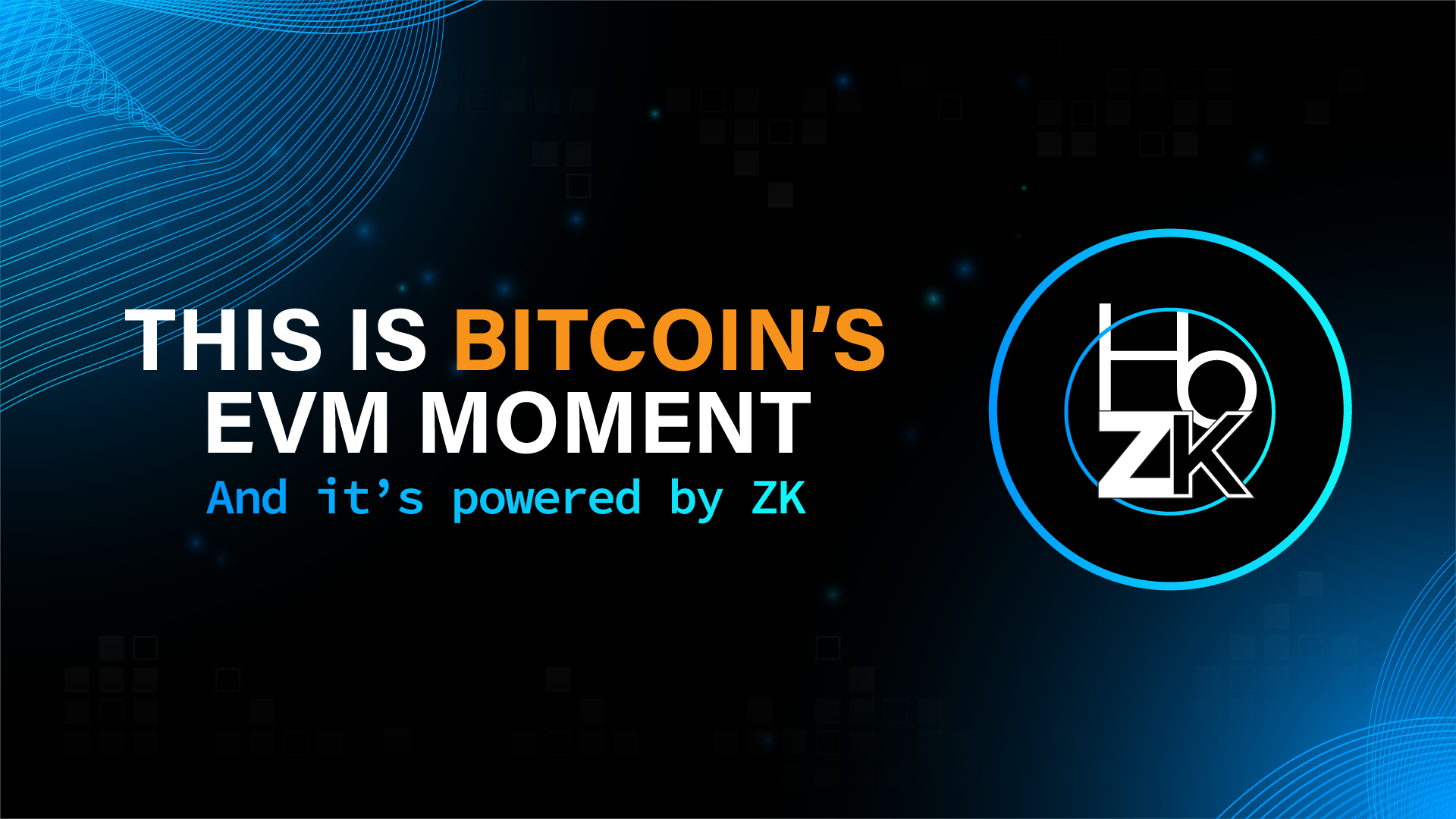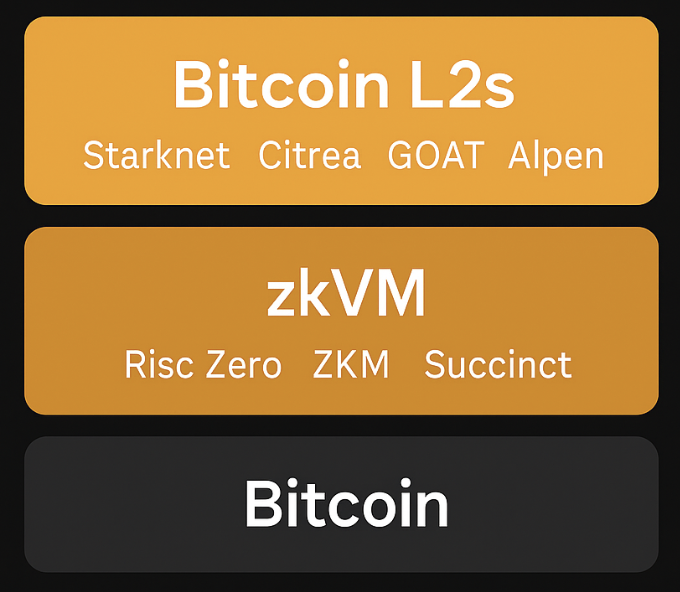
Ethereum’s rise wasn’t simply about ETH the asset. What set it apart was the Ethereum Virtual Machine - a standardized execution environment that unlocked composable smart contracts and made decentralized applications possible at scale. The EVM changed the concept of what a blockchain could be - from a simple base ledger of transactions to a foundation for a fully programmable economy.
Bitcoin, by contrast, has remained deliberately constrained. Efforts like Lightning expanded payments, while federated sidechains experimented with programmability, but none matched the trust-minimized design that Bitcoin demands. What Bitcoin has lacked is its equivalent of the EVM - a proving and execution layer capable of extending functionality without introducing new trust assumptions.
This tremendous gap is now finally being filled, as zkVMs are bringing verifiable computation into the reach of ordinary developers. At the same time, Bitcoin L2 designs - Starknet, Citrea, GOAT Network, Alpen, and more - are exploring how these zkVMs can anchor rollups and applications to Bitcoin. Taken together, this points to what could become Bitcoin’s own EVM moment - a shift from narrow utility toward broad programmability, powered by validity proofs.
Bitcoin’s strength has always been its simplicity: a secure base layer for payments and value storage. That same simplicity, however, has limited its functionality. While Ethereum developed a general-purpose execution layer, Bitcoin has remained narrow in scope.
Scaling efforts have reflected this divide. The Lightning Network extended Bitcoin’s payment capacity, but without introducing programmability beyond multi-signature logic. Sidechains and federations explored more advanced applications, yet often required trust in external operators - a trade-off at odds with Bitcoin’s ethos of minimizing reliance on intermediaries.
As a result, Bitcoin has never had an execution layer equivalent to the EVM. The technical groundwork for composable applications has been absent, leaving developers to either work within Bitcoin’s constraints or move to entirely different ecosystems. What has been missing is a way to extend Bitcoin’s functionality without undermining its security assumptions.
ZK changes everything. By allowing computations to be proven and verified independently, validity proofs make it possible to extend Bitcoin’s functionality without requiring new trust assumptions. Instead of relying on a federation or validator set, a zkRollup can anchor its state directly to Bitcoin, with proofs ensuring correctness.
zkVMs - general-purpose proving environments such as those built by Risc Zero, ZKM, Succinct, and others - provide the execution layer needed to make this practical. They allow arbitrary code to be executed and proven, then verified on-chain with minimal overhead. In effect, zkVMs serve as the equivalent of the EVM for Bitcoin: a standardized environment for verifiable computation.
On top of this, new Bitcoin L2s are taking various approaches to building zkRollups on Bitcoin, but all share the same foundation: proofs as the basis for extending Bitcoin’s capabilities.

If zkVMs and Bitcoin Rollups continue to mature, the implications are broad. Programmability anchored in Bitcoin opens the door to applications that previously required moving value off-chain or into separate ecosystems. Trust-minimized DeFi, lending, and derivatives could operate directly with Bitcoin as collateral, without introducing new custodial layers.
Cross-chain validation is another frontier. With validity proofs, external chains and applications can verify Bitcoin state natively, enabling interoperability that preserves Bitcoin as the settlement layer. This creates the possibility of a broader Rollup economy, where activity spans multiple networks but ultimately settles back into Bitcoin’s security model.
Composability also follows. Just as the EVM allowed Ethereum applications to interact seamlessly, zkVMs could give Bitcoin-based Rollups a shared execution layer. That coherence is what allows ecosystems to grow from isolated projects into integrated economies.
But here, the stakes are even higher. Ethereum’s growth was built on programmability. Bitcoin’s expansion, if it arrives, could combine programmability with the permanence and security of the most established base layer in crypto.
There is an irony in drawing this parallel. While Bitcoin L2s are beginning to explore zkVMs as their path to programmability, Ethereum itself is already looking beyond the EVM. Ethereum researchers are also deep in the weeds of experimentation with zkVMs, principally with those built on CPU instruction set architectures like RISC-V and MIPS.
The motivation is clear: these zkVMs are more general, efficient, and maintainable for proof systems than the EVM, which was never designed with zero-knowledge in mind. For Ethereum, this represents a gradual migration away from its original virtual machine toward proving environments better suited for verification at scale. For Bitcoin, it means the starting point for its own programmability is already aligned with the same technologies Ethereum now seeks to adopt.
This convergence suggests that the next phase of blockchain infrastructure may be defined less by differences between ecosystems, and more by the shared reliance on zkVMs as the execution standard. Bitcoin L2s adopting them today are not following Ethereum’s past - they are stepping directly into the same future Ethereum is now trying to reach.
The technologies are still maturing, but the direction is becoming crystal clear. All roads lead to ZK.
For more ZK-related insights, visit hozk.io/journal